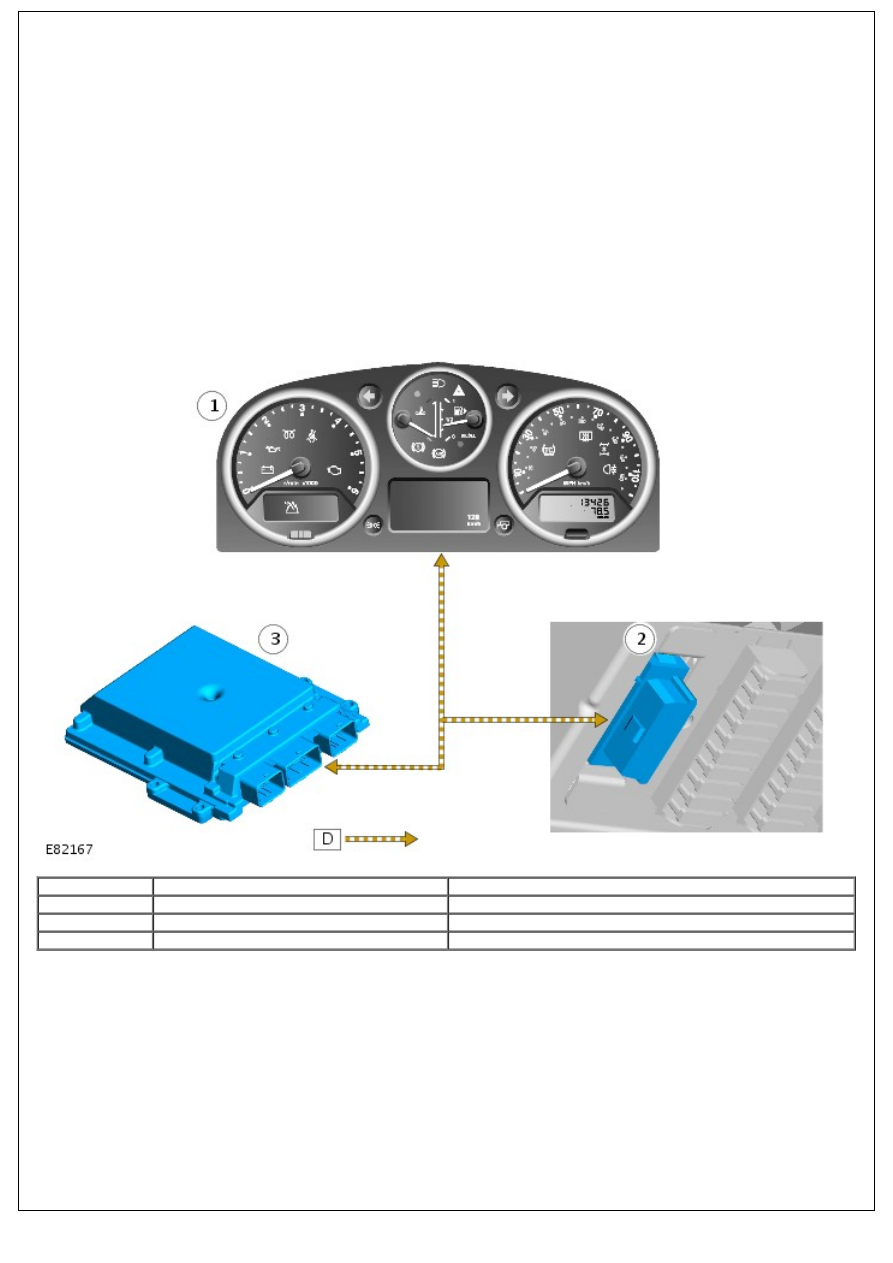Defender. Manual - part 238

Module Communications Network - Communications Network
Description and Operation
OVERVIEW
A high speed controller area network (CAN) bus is used to transfer data between the engine control module (ECM) and
instrument cluster.
The diagnostic socket is also connected to the high speed CAN bus and allows the Land Rover approved diagnostic
system to interrogate both the ECM and instrument cluster software.
The CAN bus is a high speed broadcast network where control modules automatically transmit information every few
microseconds. Information is broadcast down a pair of twisted wires, known as 'CAN high' and 'CAN low'. Information is
transmitted on the CAN bus as a voltage difference between the 2 wires.
CONTROL DIAGRAM
• NOTE: D = High speed CAN bus
Item
Part Number
Description
1
-
Instrument cluster
2
-
Diagnostic socket
3
-
ECM